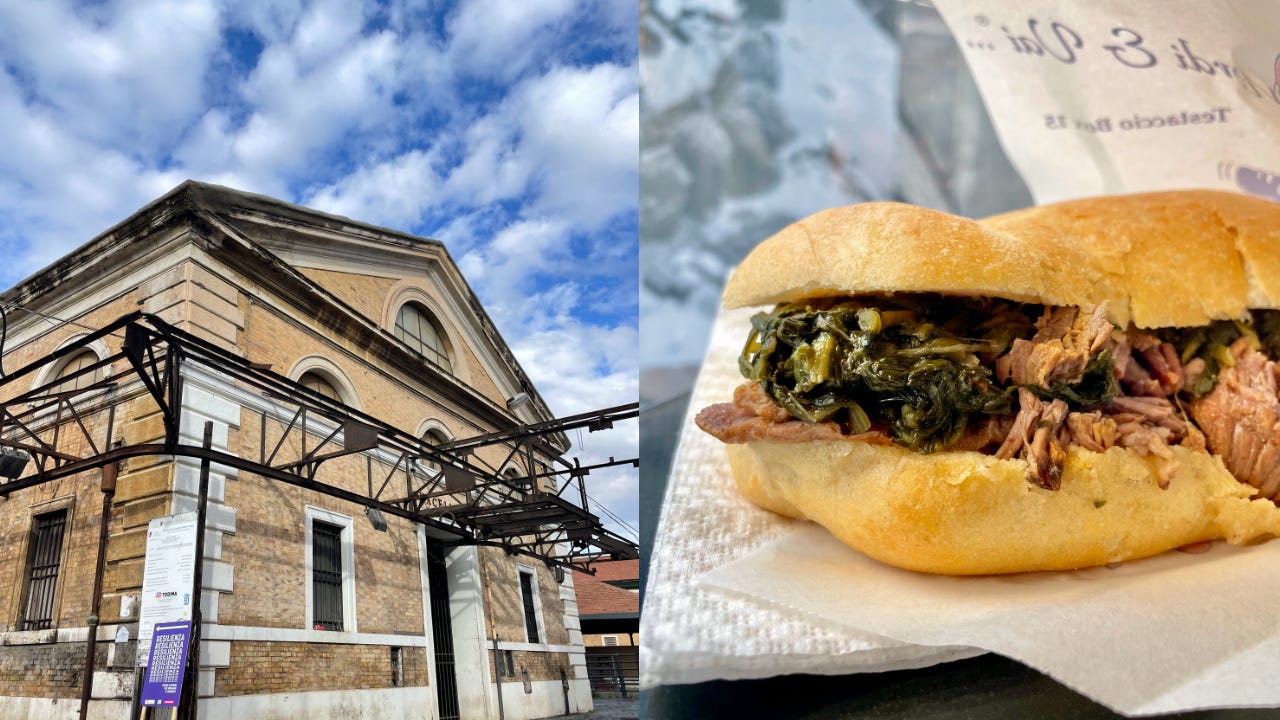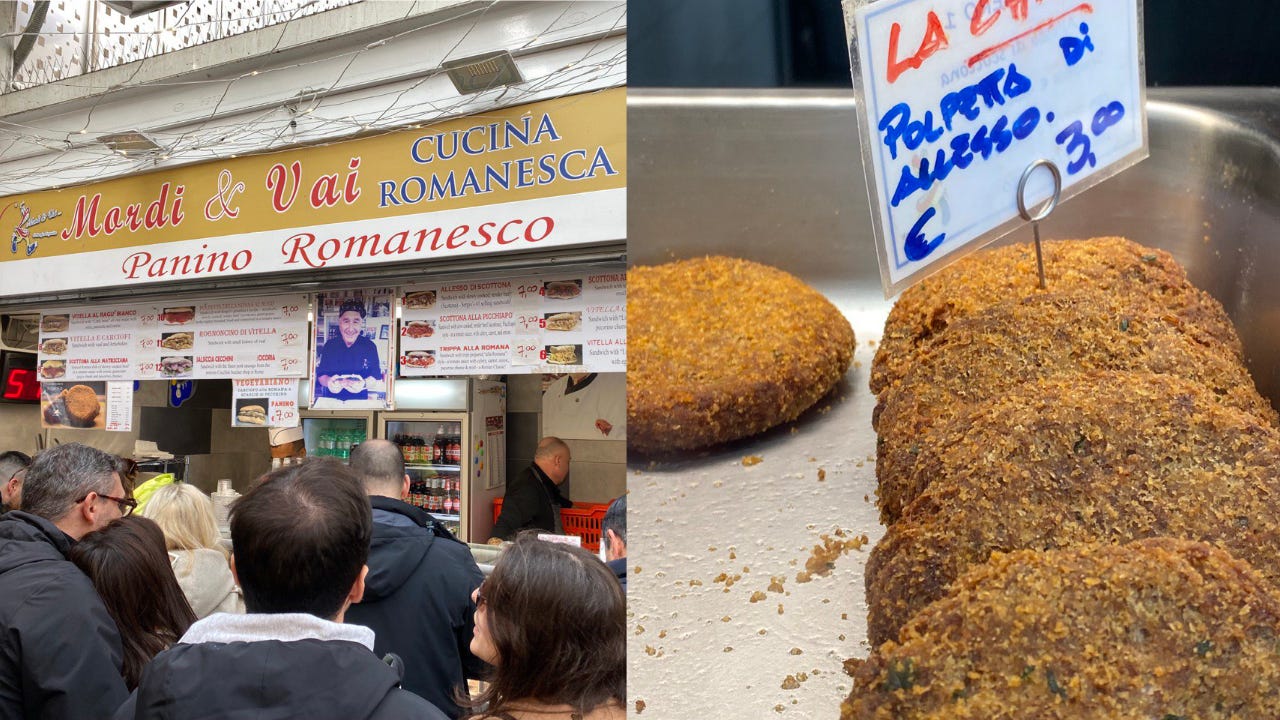A world of history between two slices of bread
Mordi & Vai’s Panino Romanesco: A Fifth Quarter Staple
Throughout history sandwiches have fed the masses. Italians have been filling bread with meats, cheeses, and most ingredients under the sun for centuries. Although simple, sandwiches, or panini, can be incredibly tasty and hit just the right spot, as well as carry a great deal of importance in what they say about our food culture and practices.
Mordi & Vai’s Panino Romanesco: A Fifth Quarter Staple
By Flora Igoe: Curious about Italy’s culinary traditions and the stories they tell, exploring the connections between its food, culture and history
The quintessential Roman panino can be found at box 15 of the city’s beloved Mercato Testaccio. Here, after 40 years as a butcher, Sergio Esposito opened Mordi & Vai, meaning ‘bite and go’ to honour Rome’s quinto quarto cuisine through a humble panino.
The quinto quarto, or fifth quarter, is a term given to animal offal, which makes up about a fourth of the weight of the carcass. Traditionally, the carcass was separated into four parts. The first quarto was subsequently sold to the nobles, the second to the clergy, the third to the bourgeoisie and the fourth to the soldiers. From each of the four divided parts, the leftover cuts became the fifth quarter, sold to the working class.
While the quinto quarto has become an important symbol of gastronomic culture across Italy – take Palermo’s meusa (veal spleen) or Florence’s lampredotto (cow stomach) – it became particularly prominent in Roman cuisine. Also located in Rome’s Testaccio neighbourhood is the Mattatoio, Rome’s historic slaughterhouse. Its workers were often partly paid with the quinto quarto, further marking its presence in the local cuisine. Since the Mattatoio mostly worked with beef and veal, while smaller animals tended to be butchered outside the city, this may have contributed to the strong presence of the bovine quinto quarto in Roman cuisine.
At Mordi & Vai, you can find a vast array of beef and veal offal, slow-cooked and stewed in dense sauces — tradition’s way of rendering the trimmings more digestible. Trays of tripe, pajata (calf intestine), and rognone (kidneys) line the counter, emanating delicious wafts through a hungry crowd, most likely always present.
After slathering a fluffy white panino in cooking juices, your quinto quarto filling of choice is generously heaped inside. For tomato-based fillings such as the classic Trippa alla Romana (beef tripe) or Polpette al Sugo (meatballs in sauce), a sprinkling of pecorino cheese is added on top. Richer fillings like Rognoncino di Vitello (veal kidney) — appropriately labeled ‘solo per pochi’ or ‘only for a few’ — are simply stewed or paired with artichokes.
It’s worth trying Mordi & Vai’s signature panino, the Alesso di Scottona (braised beef brisket). This soft-as-ever braised beef is also used for Mordi & Vai’s meatballs, arguably among the best in Rome and a must-try if you visit.






I had a wonderful panino with tongue and salsa verde and I still remember it!